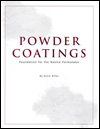The Future of Bio-Based Coatings

Inkoly / iStock via Getty Images Plus
Sustainability remains a priority for those in the coatings business, especially as the European Union plans to implement new regulations on chemical usage. As a result, manufacturers are seeking ways to incorporate more sustainably advantaged materials into their product portfolios.
Bio-based feedstocks have evolved from niche and “nice to have” to a requirement in many industries, as they are critical to enhancing sustainability in coatings applications. However, many industry players may have limited feedstock availability due to location, or lack the technology to process bio-based materials.
That’s why manufacturers must also integrate recycled content alongside bio-based materials as they work to develop more sustainable coatings in the long term. Significant investments in sustainable feedstocks and recycling technology—similar to the work done by Trinseo—will be key to improving the sustainability of coatings applications.
Utilizing Bio-Based Feedstocks
Integrating bio-based feedstocks into coatings products is one step toward reducing the end product’s carbon footprint. In this bio-based feedstock approach, renewable resources derived from organic waste—such as seed shells or vegetable oils not used as a food source—are carefully introduced into the production chain. Some feedstocks even produce proteins as a side product, which could be used in the future as fertilizer.
The biomass balance process helps ensure that only the appropriate amount of bio-based content is added to feedstocks, allowing fossil-based materials to be gradually eliminated as coating manufacturers adjust their formulas to meet performance needs. This chain-of-custody model also helps validate sustainability claims through accurate record keeping, enabling companies to trace the flow of their product throughout the value chain.
However, it is important to note that changing European regulations affect how manufacturers can source bio-based feedstocks. Today, industry players need to evaluate their sources’ land use and water consumption to ensure they align with legislative guidelines.
Integrating Recycled Content
Recent investments in chemical recycling have made recycled feedstocks more readily available in local markets. Chemical recycling uses heat, chemical reactions or both to break down plastic waste into raw materials for coatings manufacturing. In the chemical recycling process, waste is collected, treated and repurposed into a recycled monomer. These monomers are then used to polymerize the latex binders found in coatings.
Chemical recycling allows manufacturers to track their recycled materials in the value chain while supporting the reduction of fossil resource consumption, thus helping to improve the circularity of coatings. While bio-based coatings can help improve the industry’s environmental impact, manufacturers must also consider incorporating recycled feedstocks. Utilizing both materials will further efforts to create more sustainable coatings while allowing companies to track their progress.
For more information, visit www.trinseo.com.
Looking for a reprint of this article?
From high-res PDFs to custom plaques, order your copy today!









